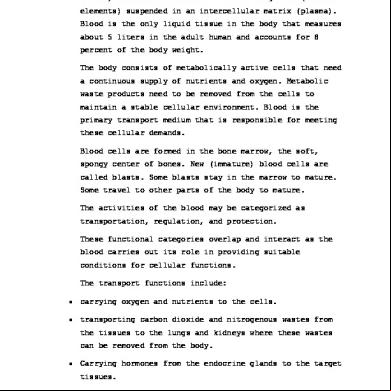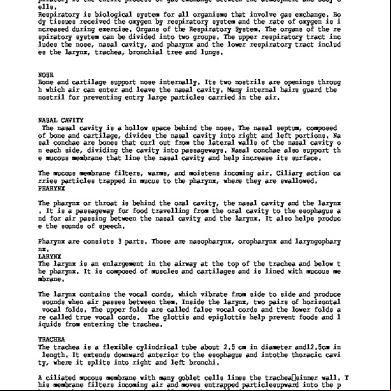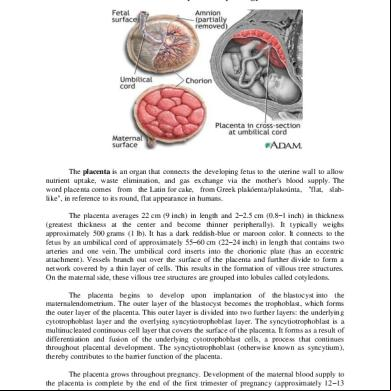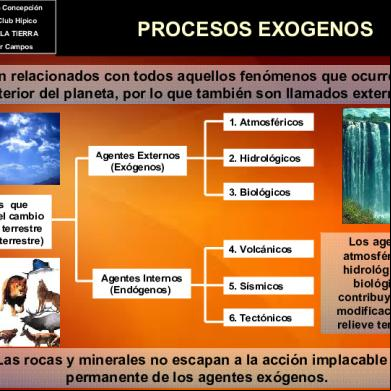Anatomy And Physiology Of Cva 5v6x2
This document was ed by and they confirmed that they have the permission to share it. If you are author or own the copyright of this book, please report to us by using this report form. Report 3b7i
Overview 3e4r5l
& View Anatomy And Physiology Of Cva as PDF for free.
More details w3441
- Words: 423
- Pages: 4
ANATOMY AND PHYSIOLOGY
The nervous system is your body's decision and communication center. The central nervous system (CNS) is made of the brain and the spinal cord and the peripheral nervous system (PNS) is made of nerves. The adult human brain weighs on average about 3 lbs. (1.5 kg) with a volume of around 1130 cubic centimetres (cm3) in women and 1260 cm3 in men, The Cerebrum: The cerebrum or cortex is the largest part of the human brain, associated with higher brain function such as thought and action. The cerebral cortex is divided into four sections, called "lobes": the frontal lobe, parietal lobe, occipital lobe, and temporal lobe. Here is a visual representation of the cortex:
Frontal Lobe- associated with reasoning, planning, parts of speech, movement, emotions, and problem solving Parietal Lobe- associated with movement, orientation, recognition, perception of stimuli Occipital Lobe- associated with visual processing Temporal Lobe- associated with perception and recognition of auditory stimuli, memory, and speech
CVA is a sudden loss of consciousness resulting when the rupture or occlusion of a blood vessel leads to oxygen lack in the brain. CVA denotes either ischemia from occlusion of blood vessels (producing cerebral ischemia and infarction) or hemorrhage through their rupture. Hemorrhage may occur outside the dura (extradural), beneath the dura mater (subdural), in the subarachnoid space (subarachnoid), or within the brain substance itself (intracerebral). If blood flow stopped for longer than a few seconds, the brain cannot get blood and oxygen. Brain cell can die, causing permanent damage. Ischemic stroke occurs when a blood vessel that supplies blood to the brain is blocked by a blood clot. A clot may form in an artery that is already very narrow. This called a thrombotic stroke.
A clot may break off from another place in the blood vessels of the brain, or from some other part of the body, and travel up to the brain. This called cerebral embolism, or an embolic stroke. Fat, cholesterol, and other substances collect on the artery walls forming a sticky substance called plaque.
A hemorrhagic stroke occurs when a blood vessel in part of the brain becomes weak and bursts open, causing blood to leak into the brain. Some people have defects in the blood vessels of the brain that make this more likely. RISK FACTORS: Diabetes, High cholesterol, Atrial fibrillation, Increasing age, especially after age 55, Race (Black are more likely to affect), smoking, alcohol, cocaine and overweight.
The nervous system is your body's decision and communication center. The central nervous system (CNS) is made of the brain and the spinal cord and the peripheral nervous system (PNS) is made of nerves. The adult human brain weighs on average about 3 lbs. (1.5 kg) with a volume of around 1130 cubic centimetres (cm3) in women and 1260 cm3 in men, The Cerebrum: The cerebrum or cortex is the largest part of the human brain, associated with higher brain function such as thought and action. The cerebral cortex is divided into four sections, called "lobes": the frontal lobe, parietal lobe, occipital lobe, and temporal lobe. Here is a visual representation of the cortex:
Frontal Lobe- associated with reasoning, planning, parts of speech, movement, emotions, and problem solving Parietal Lobe- associated with movement, orientation, recognition, perception of stimuli Occipital Lobe- associated with visual processing Temporal Lobe- associated with perception and recognition of auditory stimuli, memory, and speech
CVA is a sudden loss of consciousness resulting when the rupture or occlusion of a blood vessel leads to oxygen lack in the brain. CVA denotes either ischemia from occlusion of blood vessels (producing cerebral ischemia and infarction) or hemorrhage through their rupture. Hemorrhage may occur outside the dura (extradural), beneath the dura mater (subdural), in the subarachnoid space (subarachnoid), or within the brain substance itself (intracerebral). If blood flow stopped for longer than a few seconds, the brain cannot get blood and oxygen. Brain cell can die, causing permanent damage. Ischemic stroke occurs when a blood vessel that supplies blood to the brain is blocked by a blood clot. A clot may form in an artery that is already very narrow. This called a thrombotic stroke.
A clot may break off from another place in the blood vessels of the brain, or from some other part of the body, and travel up to the brain. This called cerebral embolism, or an embolic stroke. Fat, cholesterol, and other substances collect on the artery walls forming a sticky substance called plaque.
A hemorrhagic stroke occurs when a blood vessel in part of the brain becomes weak and bursts open, causing blood to leak into the brain. Some people have defects in the blood vessels of the brain that make this more likely. RISK FACTORS: Diabetes, High cholesterol, Atrial fibrillation, Increasing age, especially after age 55, Race (Black are more likely to affect), smoking, alcohol, cocaine and overweight.










